SUMMARY
This is AI generated summarization, which may have errors. For context, always refer to the full article.
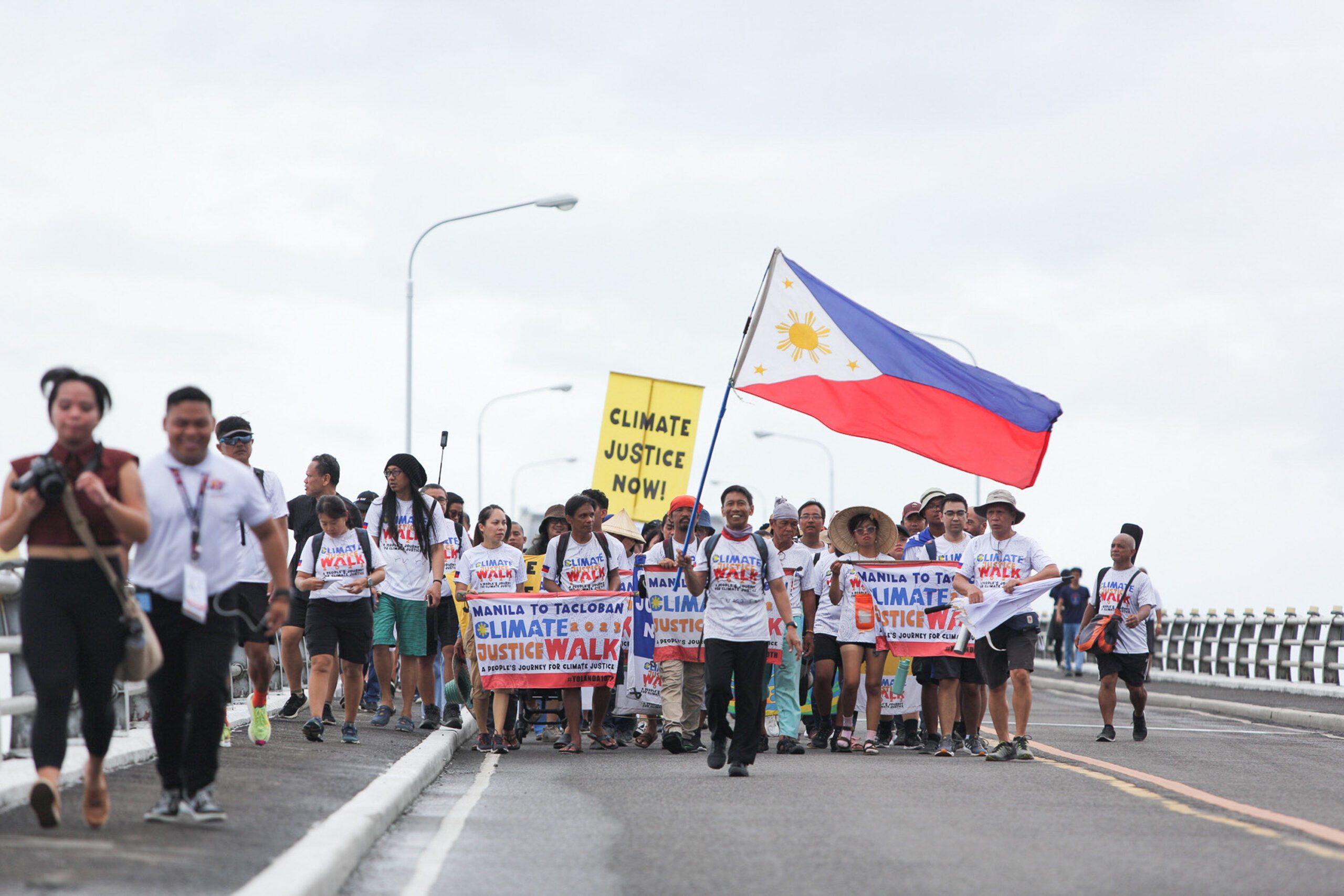
This story is part of Rappler’s series on the 10th anniversary of Super Typhoon Yolanda (Haiyan).
Yolanda was one of the most powerful typhoons in history, which made landfall on November 8, 2013. The super typhoon claimed thousands of lives and displaced millions from their homes. Ten years later, Rappler visits some of the affected communities to see what life has been like since the disaster.

TACLOBAN, Philippines – Almost everyone you ask in Tacloban City has a Yolanda story.
From the housing projects in north Tacloban to the coastal areas downtown, everyone has something to tell. If they were not in Tacloban that day, they can still recall stories based on their relatives’ experiences.
In their stories, the same images kept repeating. Residents remembered watching the news about Janet Lim Napoles, the so-called pork barrel queen who testified in a Senate hearing the day before Yolanda wrought havoc in the country. That Friday, it was dark and the winds were howling. Water was everywhere. When the storm was over, the streets were hardly passable. Dead bodies were made ordinary. People kept walking long distances.
Every year since November 8, 2013, it has been the practice in Tacloban to mark the thousands of lives claimed by Yolanda.
But for nurse Fe Anelia Sia, one of the medical personnel who went on duty four days after Yolanda made landfall, memorializing was not a choice. They have had to endure the persistence of memory.
“Kasi kung ako lang, ayokong alalahanin ang nangyari noon. Mabigat sa loob na i-recall mo iyon. Ten years na ang nakakalipas, ganoon pa rin. On the process pa rin kami ng moving on,” she told Rappler last October.
(If it were up to me, I don’t ever want to remember what happened before. It is heavy to recall. Ten years have passed, but things remain the same. We’re still in the process of moving on.)
Super Typhoon Yolanda (Haiyan) took the lives of more than 6,000 people, affected millions, and caused P95.48 billion in damage. It is considered one of the most powerful storms in world history, with recorded maximum sustained winds at 315 kilometers per hour.
It made the first of its six landfalls in Guiuan, an isolated fishing town in Eastern Samar, but it was Tacloban that bore the brunt and became ground zero of Yolanda.
The disaster caused by Yolanda put Tacloban and the Philippines on the global spotlight and intensified the clamor for better disaster preparedness and adaptation in the country.
Housing remains biggest challenge
As similar images and stories persist among those who lived to tell the tale, so do the problems in rehabilitation.
To this day, thousands of housing units made for Yolanda survivors remain unused or in disrepair. Water connection is still a problem in the housing sites, which Tacloban Mayor Alfred Romualdez attributed to a long-running issue in Tacloban’s water pipes.
Even the choice to relocate people up north was criticized. The housing sites were far from downtown, where business and commerce take place.
Ladylyn Mangada, associate professor of political science at University of the Philippines Tacloban, called this a “wholesale relocation.” Mangada studied post-Yolanda adaptation in the context of housing, women’s reproductive health, and remittances.
According to Mangada, the deluge of help also created a problem. It was hard to track down who was responsible for some wrong choices made.
“Sometimes, they point fingers,” said Mangada. “Was it the fault of the city government or the humanitarian organizations?”
In the immediate aftermath, local and foreign organizations went out of their way to help the people hit by the typhoon. In the course of 10 years, many humanitarian organizations kept coming back to give aid. Even the Pope visited Tacloban.
Mangada lamented that the local government could have done more to avoid the delays, give survivors their homes, and remove people who continue to live in no-dwell zones.
“Kaya naman ng leadership dapat, pero nakulangan talaga ako,“ said Mangada. “Mabagal ang pag-construct ng bahay, substandard.” (The leadership could have done it, but I found what they did lacking. The construction of houses was slow, it was substandard.)
When Rappler visited Tacloban last October, many housing units were overrun by weeds and wild plants. Rows of houses were dilapidated and unoccupied. Meanwhile, many people remained in no-dwell zones in the city.
The tragedy of Yolanda continues to fuel debates on disaster management. For one, it is still an ongoing discussion whether or not to set up a separate national government agency dedicated to disaster resilience.
Caution: Climate change
As one of the deadliest typhoons in history, Yolanda continues to be a cautionary tale of what can happen as human activities exacerbate the climate crisis.
Annually, many environmental and climate change groups mark the anniversary by lighting candles every November 8 in parts of the country. Some groups organize awareness campaigns, photo exhibits, and storytelling events to commit the tragedy to memory.
This year, green groups initiated a climate walk from Manila to Tacloban.
“When Typhoon Yolanda took the lives and homes of thousands in 2013, our government made promises to prevent further climate change so we can avoid another Yolanda,” said Aaron Pedrosa, head of the legal team of the Philippine Movement for Climate Justice (PMCJ).
“Ten years later, we still have fossil fuel plants warming the atmosphere. We need to act now more than ever.”
PMCJ is one of the organizations that joined the climate walk for the 10th anniversary. Every year, the group joins Yolanda commemoration activities and has been active in opposing mining in Eastern Samar and the continuous operations of coal-fired power plants in the country.
“The people of Tacloban [have] yet to heal from the horrors of Yolanda because reparations became idle and there were no climate-related actions to ensure that another Yolanda will not happen again,” said Farahdiva Gamalo, convenor of PMCJ’s Eastern Visayas chapter.
During a visit to the weather radar station of the Philippine Atmospheric, Geophysical and Astronomical Services Administration in Guiuan, Eastern Samar, Rappler talked to Marianito Macasa about Yolanda and the increasing world temperature.
Macasa is the officer-in-charge of the station. When Yolanda first made landfall at 4:40 am in Guiuan, Macasa was in the complex. He remembered getting his left ear nicked by the sliding door that was blown off.
“With global warming, we expect typhoons to get stronger,” Macasa told Rappler in Filipino.
Macasa hoped that better policies integrating science would be implemented by local leaders. After all, there have been many seminars and training sessions on disaster preparedness and adaptation in the last 10 years.
He said he was also a resource person for flood and typhoon drills regularly conducted in the town.
“They have conducted a lot of seminars,” Macasa said in Filipino. “It would be impossible if until now they haven’t absorbed anything.”
10 years
President Ferdinand Marcos Jr. visited Tacloban on Wednesday, November 8, for the 10th anniversary of Yolanda. Cousins of the President and members of Tacloban’s political clan, the Romualdezes, joined him in the day’s commemorative activities.
On Wednesday morning, a Holy Mass at the Tacloban Convention Center was held. Marcos led the wreath-laying ceremony in honor of those who died during Yolanda. The Department of Science and Technology also held an exhibit of innovations and technologies in disaster risk reduction and management on the same day.

Before the day ended, green groups converged at Plaza Rizal for the annual candle-lighting ceremony.

Follow Rappler’s coverage of the 10th anniversary of Yolanda here. – Rappler.com
ALSO ON RAPPLER
- After Yolanda: A causeway threatens efforts by locals to restore a mangrove forest
- After Yolanda: A teacher’s dream for the children of Guiuan
- Rappler Talk: Guiuan’s decade of recovery after Yolanda
- WATCH: How the people of Eastern Samar take care of the environment
- Rappler Recap: ‘Work is not done,’ Marcos says of Yolanda recovery
- Rappler Recap: Tacloban residents light candles for 10th year of Yolanda
- On Yolanda’s 10th year, groups urge gov’t to ‘hold big polluters accountable’
- Marcos resurrects issue of ‘uncounted, unrecorded’ victims of Yolanda
- A decade later: 15% of Yolanda houses unfinished, thousands unoccupied
- [Under 3 Minutes] Kumusta na ang Yolanda housing projects?
- Part 2: Water, electricity issues bog Yolanda relocation plans
1 comment
How does this make you feel?

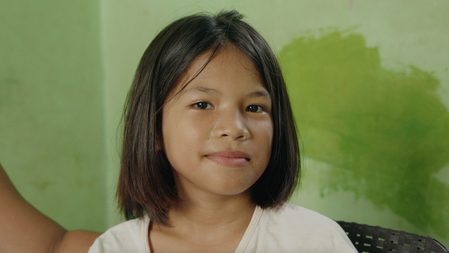



![[Under 3 Minutes] Kumusta na ang Yolanda housing projects?](https://www.rappler.com/tachyon/2023/11/title-card-ls-3.jpg?resize=257%2C257&crop_strategy=attention)
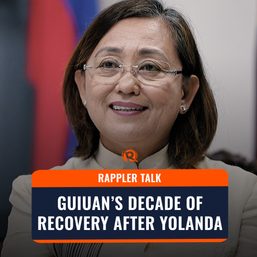




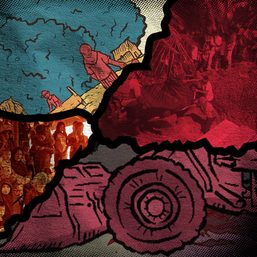


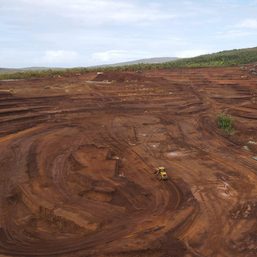
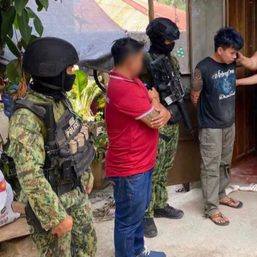



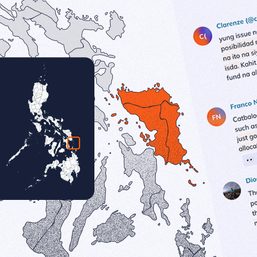


I’m not a BBM fan but I can’t fault him for the fact that nothing has been done and that the houses built are in disarray and substandard. There was so much foreign aid pored into the recovery of Typhoon Yolanda. Who profited the most from the money? For a professed highly religious country, the people in power have no soul.